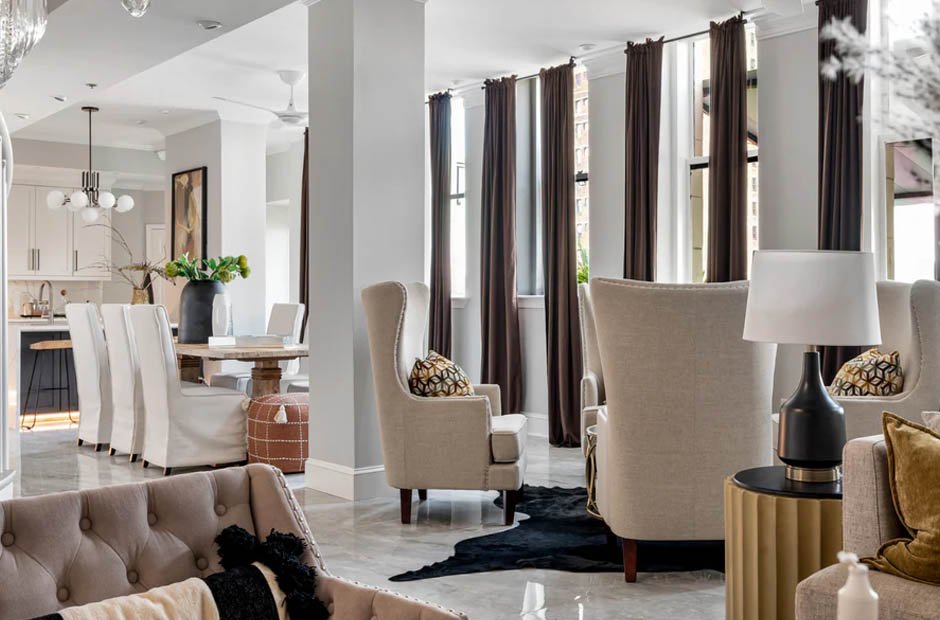Revamping your home with thoughtful use of color and design can transform everyday spaces into stunning visuals and enhance the overall ambiance of your residence. Whether you’re aiming for a subtle refresh or a bold transformation, the art of home enhancement lies in the strategic application of colors and thoughtful design elements. This guide will navigate you through incorporating these elements to elevate your living environment effectively.
Embracing Color Theory in Home Design
Color is not just a visual delight; it influences mood, alters perceptions of space, and can even impact daily emotions and behaviors. Understanding color theory can help you choose hues that not only beautify your space but also create the desired atmosphere.
Choosing Your Palette
Begin by selecting a base color that reflects the mood you want to evoke in a room. For instance:
- Use blues and greens to create a calming and restorative environment, perfect for bedrooms and bathrooms.
- Opt for warmer tones like yellows and reds to foster lively interactions in spaces like the kitchen or family room.
Incorporating the right colors can sometimes require professional finesse, especially for achieving the perfect finish and balance. House painters Sydney can provide that expert touch, ensuring your color choices look as good on your walls as they do on your mood board.
The Psychology of Color
Colors do more than fill space; they communicate. For example:
- Blue is often seen as tranquil and serene, ideal for creating a soothing atmosphere.
- Red can stimulate the appetite and conversation, making it a popular choice for dining areas.
Understanding these subtleties can enhance the functionality and emotional appeal of your spaces.
Incorporating Textures for Depth and Interest
Texture in interior design refers to the surface quality of a material. Every texture has a visual weight and plays a crucial role in balancing the aesthetics of a room.
Mixing Textures
To successfully mix textures, consider the following:
- Combine rough textures with smooth ones to create visual and tactile balance.
- Use glossy finishes to reflect light and matte finishes to absorb it, adding depth and dimension to your rooms.
Natural and Synthetic Textures
Incorporate a variety of materials to enhance the complexity of your interiors:
- Natural textures like wood, linen, and stone bring warmth and authenticity.
- Synthetic textures, such as acrylic and polyester, can introduce modernity and practicality.
Strategic Use of Lighting
Lighting is a powerful tool in home design, capable of transforming the mood of a room with the flick of a switch.
Types of Lighting
- Ambient Lighting: Provides overall illumination and sets the base lighting level.
- Task Lighting: Focuses light on specific areas needed for activities like reading or cooking.
- Accent Lighting: Highlights important features, artwork, or architectural elements.
Enhancing Colors and Textures with Light
The direction and intensity of light can significantly affect how colors and textures are perceived. For example:
- Direct light can enhance the texture by creating shadows and highlights.
- Soft, diffused light can make colors feel warmer and more cohesive.
Functional and Stylish Furniture Placement
The arrangement of furniture can define spaces, influence traffic flow, and affect the functionality of a room.
Principles of Furniture Placement
- Balance: Distribute visual weight evenly throughout the room.
- Functionality: Arrange furniture based on how you use the space. Ensure there is enough room for movement.
- Aesthetic: Consider the size, style, and color of furniture pieces to complement the overall design theme.
Creating Focal Points
Every room should have a focal point, whether it’s a piece of art, a beautiful piece of furniture, or a unique design feature. Arrange other elements to support and enhance this focal point.
Enhancing Small Spaces
Color, lighting, and design can make small spaces feel larger and more inviting.
Color Techniques
- Use light colors to make a room feel bigger and airier.
- Employ a monochromatic color scheme to create visual coherence and expand the space visually.
Smart Design Solutions
- Use multi-functional furniture to save space and maintain style.
- Employ mirrors strategically to reflect light and create an illusion of depth.
Mastering Home Enhancement
The art of home enhancement through color and design is about creating a space that reflects your personal style while meeting functional needs. Whether you’re working on a DIY project or consulting with professional house painters in Sydney, each design decision should contribute to a harmonious, balanced, and beautiful home environment. By carefully selecting colors, textures, and lighting, and thoughtfully placing your furniture, you can transform any space into a comfortable, stylish, and inviting home.
Top of Form
Bottom of Form








